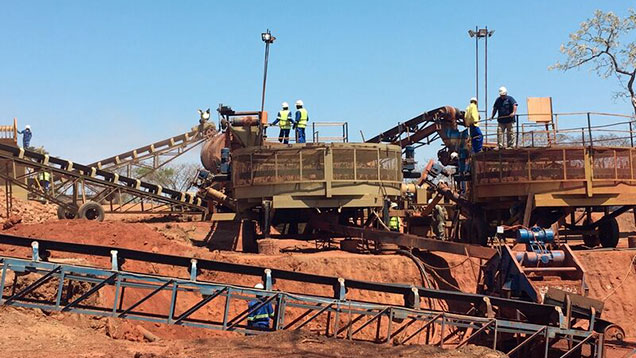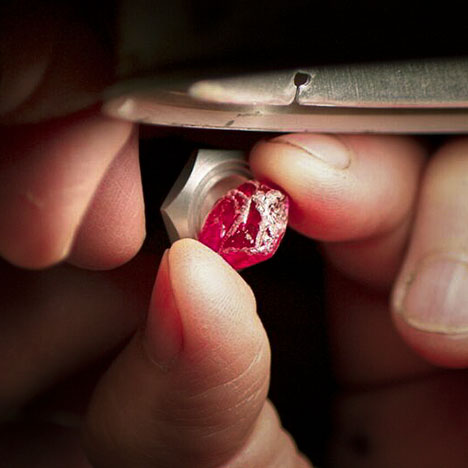New Ruby Miner in Mozambique

Mustang Resources LLC, a publicly listed Australian company, is developing a ruby mining operation in northern Mozambique. With the success of the colored stone mining giant Gemfields, Mozambique has secured its position in today’s global ruby market. Mustang’s concession is located about 8 km northwest of Gemfields’ Montepuez ruby mine. Both properties are located on the ruby mineralization belt in the Montepuez Complex, where ideal physical and chemical conditions favored the formation of gem-quality ruby. In between the two concessions there are some designated ruby-bearing areas where individual small-scale miners can legally work.
While the geology of the Mustang operation is generally similar to that of the Gemfields concession, the bulk sampling strategy and washing process are slightly different (figure 1). Currently, the miners focus on exploring and sampling the secondary deposits. They open pits of 20 × 5 meters or 20 × 7 meters and immediately refill the first pit before opening the adjacent ones; this way, no large pit is left open on the surface of the mining area. Mustang has been using scrubbers instead of log washers to break the clay bodies in the ore. A new customized scrubber system will soon be in place to optimize this process. Unlike the jig system applied by many colored gemstone mining operations around the world, the team uses a giant rotary pan to concentrate the heavy minerals, including ruby, through the centrifugal forces generated during rotation.
Since the team from Mustang started to develop the project in early 2016, the exploration, bulk sampling and ruby recovery have made significant progress. Christiaan Jordaan, the managing director of Mustang’s Montepuez ruby project, informed the authors that the washing plant had been successfully relocated and tuned to operate efficiently and that grading into parcels had begun (figure 2). The team has test marketed these rubies in the United States, where some large, significant stones will be cut by well-known cutters. Mustang will also test the ruby market in Asia and other parts of the world. Jordaan reassured the authors that Mustang will focus on improving quality of life in the mining community and promoting their ruby as an ethically mined product. Since the beginning of this ruby mining project, the company has hired and trained 70 local employees to work together with foreign experts.

.jpg)


